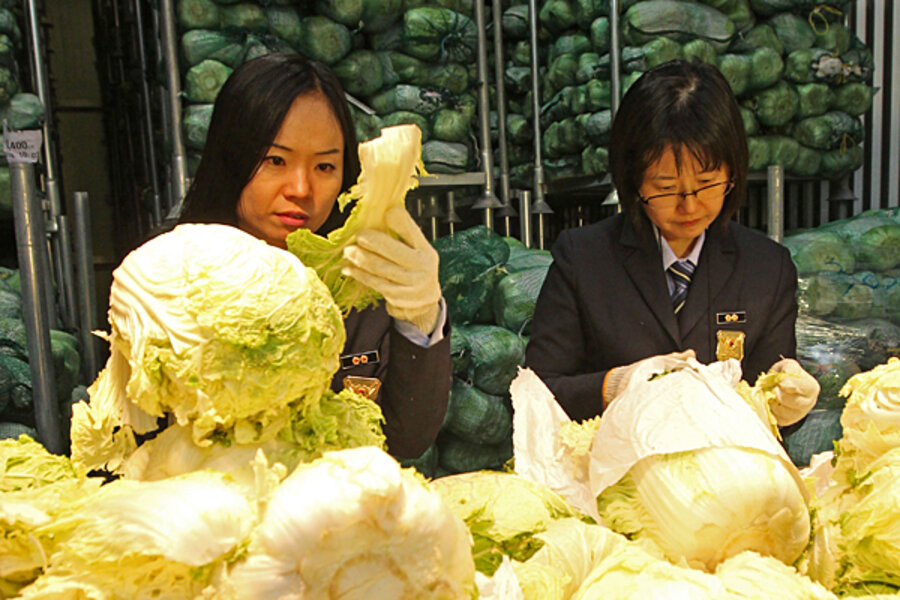South Korea's kimchi crisis
Loading...
| Seoul, South Korea
The skyrocketing price of Napa cabbage and white radishes has caused a kimchi crisis in South Korea. On Monday, the price of Napa cabbage here stood at about $10.20 per 2.5 kilograms, more than double last week’s price and more than six times last year’s rate.
The first thing to understand here is that kimchi (fermented cabbage) is more important to Koreans than ketchup is to Americans. In a country where the pickled dish is eaten at almost every meal, the price hike has disrupted the nation's eating habits.
Some restaurants have even begun charging for the condiment. Matriarchs are concerned that the crunch will affect the traditional kimchi-making season that begins next month. Even the president’s kitchen isn’t safe: Yonhap News reported that the Blue House switched from kimchi made from Napa cabbages to European cabbages because of the rising produce costs.
"This is the first time that cabbage prices have gone up so much," Park Young-koo, a researcher at the Korea Rural Economic Institute, told the Wall Street Journal. "Since we have monitored the price, nothing like this has happened before."
Even as French-style bakeries and pizza joints have popped up across the country in recent years, kimchi has remained a mainstay in the Korean diet. There’s an old Korean saying that “kimchi is half of all food provisions.” While Koreans no longer bury it in jars underground during the winter, most households have a special refrigerator solely dedicated to kimchi.
In the Seoul area, there’s both the Kimchi Museum (where you can learn about the more than 100 varieties of kimchi) and the World Institute of Kimchi (where scientists are working to unravel the microbiology responsible for the dish’s sour taste). It was a point of national pride when freeze-dried kimchi traveled to space with Korea’s first astronaut in 2008.
Not surprisingly then, cabbage farming is a lucrative business in Korea. When I visited a cabbage patch near Taebaek mountain last summer, I was surprised to find out how seriously farmers took protecting the rows of green heads from thieves.
Korean farmers tend to yield 250,000 tons of Napa cabbage annually. A record-breaking wet summer has destroyed many cabbage crops this year, transforming acres of verdant bulbs to rotting mush. Typhoon Kompasu further devastated crops that had managed to survive the rains. Only 150,000 tons of Napa cabbage are expected to be harvested this year.
On Friday, the Blue House announced sweeping plans to counter the skyrocketing produce prices. The government will temporarily eliminate the 30 percent tariff on Napa cabbages and 27 percent tariff on white radishes. Additionally, the Korea Agro-Fisheries Trade Corporation will import 100 tons of cabbage and 50 tons of radishes from China this month, the first time a Korean government agency has imported produce directly.
These steps mark a dramatic turnaround from business as usual.
As produce prices are expected to continue to rise through mid-October, it is likely that Korea’s best-known national condiment will be forced to globalize. Just as Philadelphia cheese steaks from Canada just doesn't sound quite right to Americans, this might be a bit hard to swallow for Koreans.





